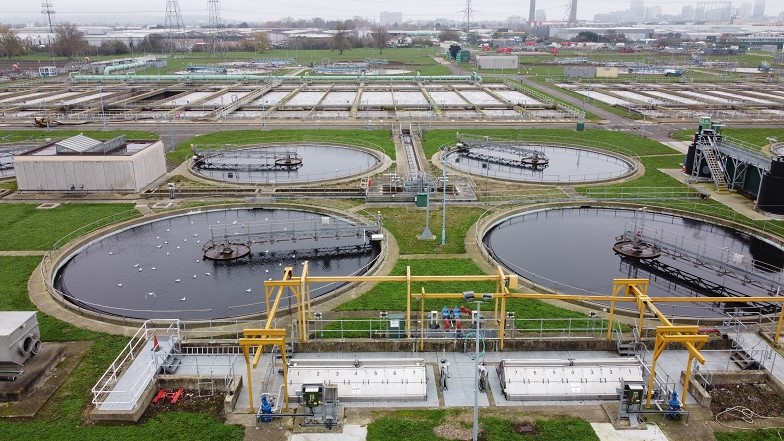The UK‘s largest water company has converted two more of its sewage treatment works (STWs) into poo power plants by converting its sewage sludge into biomethane, which can then be used as a source of electricity.
The Hogsmill STW in Surrey is exporting enough electricity to power 900 properties, while the Beddington STW in Sutton, is exporting the equivalent of 1200 homes. This comes following other successful biomethane conversion projects at the company’s Beckton and Maplelodge STWs.
To make this possible, Thames Water have worked with UK Power Networks to upgrade electricity network capacity for the project. At this local level, this has increased the export limit meaning the converted wastewater is able to be used as an energy source for thousands of homes and businesses.
Ian Ruffell, Head of Waste Water Treatment South London at Thames Water said:
“We are thrilled to introduce poo power as a source of energy from two sites in south west London as we look to play a role in the future of renewable energy.
“The successful use of biomethane conversion at Hogsmill and Beddington shows the dedication of our teams to delivering this project and our own commitment towards reducing our carbon footprint.”
Steve Carlow, major connections manager at UK Power Networks, said:
“It was great to work with Thames Water on these projects and be part of their journey to Net Zero. We look forward to working with Thames Water on future projects to further assist their transition to a low carbon future.”
How it works
A by-product of the sewage treatment process is sewage sludge. The solid material in the sludge is separated from the liquid and treated in heated tanks, known as digesters, to kill bacteria. By heating the sludge, a bio gas is created known as biomethane, which can be used to power engines which are connected to electricity generators.
The power generated is used at the Thames Water site first, to offset the amount of energy they have used, the leftover energy is then used by the grid to power homes and businesses.
Thames Water currently collects 4.6 billion litres of wastewater daily from c.16 million customers and predicts there will be a growing demand for biomethane, resulting in high use and a cost-effective way of using energy. Having cut emissions by almost 70 per cent since 1990, Thames Water has also self-generated 536 giga watt hours of renewable energy in 2022/23, covering 27 per cent of its own energy needs, which will provide a better environmental outcome for customers and help protect the water cycle for future generations.



